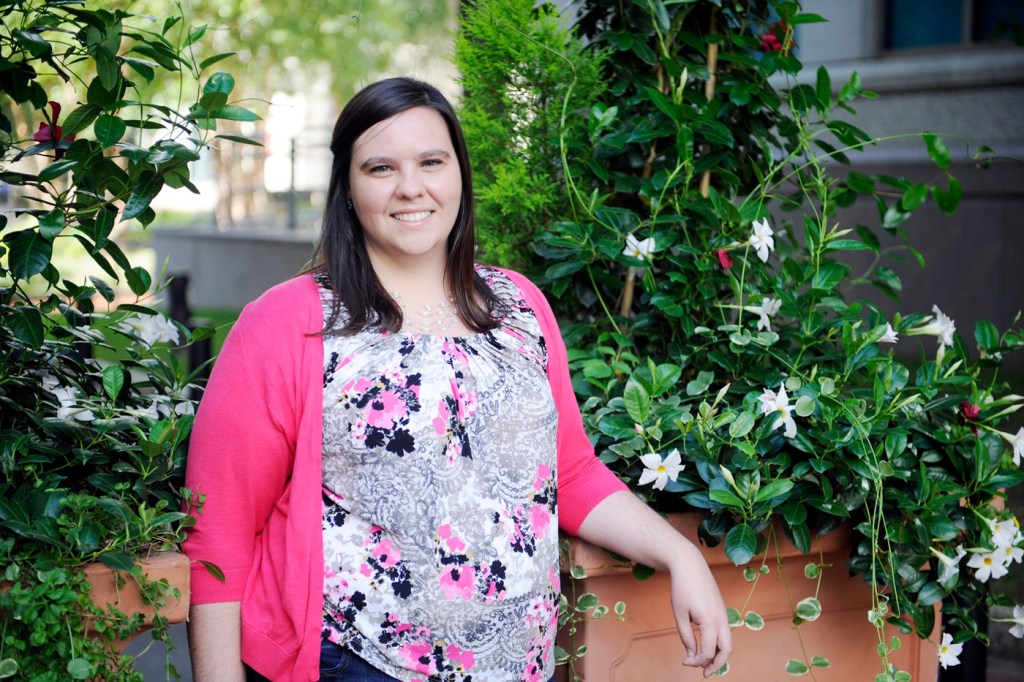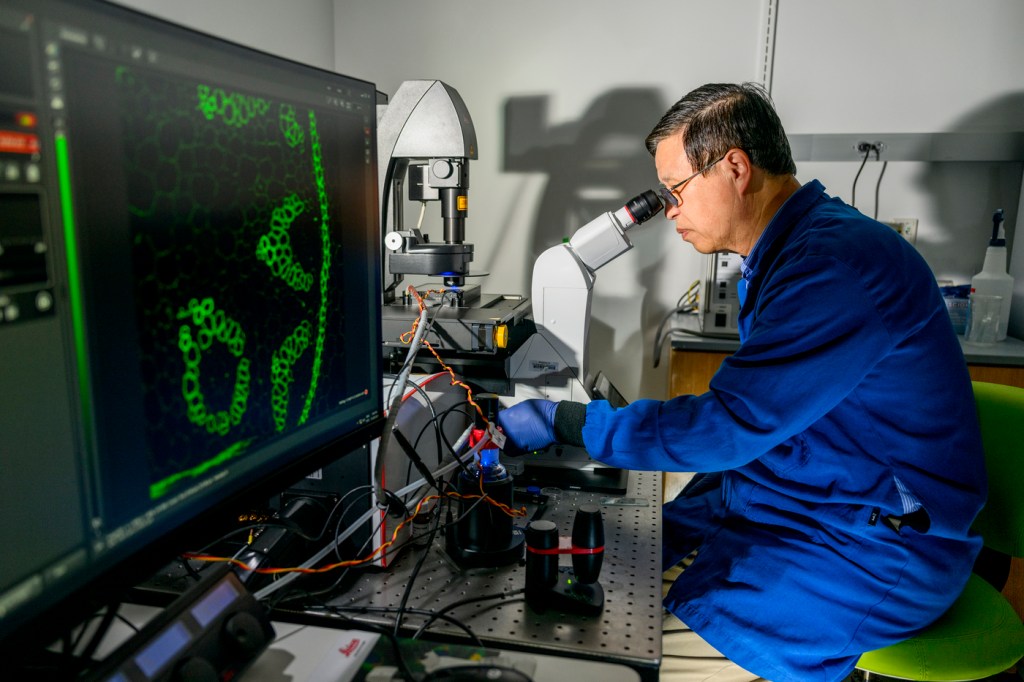Graduate researcher wins fellowship to design drugs to combat deadly disease

When Northeastern graduate student Dana Klug learned, in mid-July, that she had won a prestigious predoctoral fellowship from the American Chemical Society Division of Medicinal Chemistry, she did what researchers in labs around the world do on such occasions.
She hit “high elbows” with her advisor, associate professor of chemistry and chemical biology Michael Pollastri, who heads Northeastern’s Laboratory for Neglected Disease Drug Discovery.
“You have gloves on,” Klug explains, laughing, “so you bump elbows instead of doing a high five.”
In Klug’s case, those gloved hands had spent countless hours manipulating chemical compounds—small molecules that Pollastri’s lab had identified as possible drug candidates to treat Human African trypanosomiasis, or sleeping sickness, a deadly disease transmitted by tsetse flies that affects tens of thousands of people in rural Africa annually.
The $26,000 fellowship, given to graduate students in their third or fourth year of study, will enable Klug to continue designing and synthesizing variations of 16 of those compounds in the coming year in an effort to find the ones most effective at killing the parasite that causes the disease.

Photo by Matthew Modoono/Northeastern University
“This is a national award and is really competitive,” says Pollastri, who with his colleagues in 2014 reported identifying 797 compounds as “starting points” for discovering new drugs for sleeping sickness after screening more than 42,000 compounds supplied by collaborator GlaxoSmithKline, the global healthcare company.
Klug’s 16 compounds, broken into two groups with similar chemical structures, come from those 797. “Students in the top medicinal chemistry research groups in the country apply to this program, and only three received the award this year,” says Pollastri. “It’s a strong statement about Dana’s promise as a future leader in the field.”
Klug’s interest in neglected tropical diseases such as sleeping sickness was sparked as an undergraduate at DePaul University, in Chicago, where she majored in chemistry and minored in biology and sociology, taking courses in global health. Her undergraduate research advisor, associate professor Caitlin Karver, had been a postdoctoral fellow in Pollastri’s lab and recommended that she apply to Northeastern for her doctoral studies. “How’s that for a small world?” says Pollastri.
Upon acceptance into Northeastern’s chemistry Ph.D. program, Klug received a College of Science Distinguished Graduate Fellowship, which allowed her to jump directly into research with Pollastri’s team in October 2013. She did so with alacrity: “She’s one of those students to whom you explain something once or just vaguely and she takes that and runs with it independently,” says Pollastri.
In designing her compounds, Klug is like a chef crafting a gourmet dish, adding an atom of, say, hydrogen here, removing an atom of nitrogen there, or shifting an element left to right to transform the chemical structure of the individual molecule. “Synthesis is all about making and breaking bonds between elements,” she says. “Each reaction brings about a specific structural transformation that results in a new compound, which is then purified and used as the starting material for the next reaction in the synthesis.”

Photo by Matthew Modoono/Northeastern University
Klug sends each iteration off to the Spanish National Research Council, in Granada, Spain, where collaborator Miguel Navarro and the GlaxoSmithKline team mix it with both the sleeping-sickness parasite, Trypanosoma brucei, and human cells to test for potency in the first case and toxicity in the second.
What happens in those Petri dishes helps determine Klug’s next step. The 797 compounds Pollastri’s lab initially selected as “hits” against T. brucei work by inhibiting proteins called kinases, which are found in both humans and parasites. The job of kinases is to add phosphate groups—structures of oxygen and phosporous—to other proteins inside cells, spurring those proteins to facilitate cell growth and division. “If you inhibit human kinases, you can stop cell growth,” says Klug. “We believe that same inhibitory action occurs in parasites, killing them or blocking their ability to reproduce.”
The results in Spain provide clues for new variations.
Knocking out T. brucei is a tall order, but one to which Klug is committed. “The original hits have a pretty good profile so I’m working on scaling up one of them to possibly test in an animal model,” she says. “But I also have many plans for a lot of different compound variations that I want to make.”





